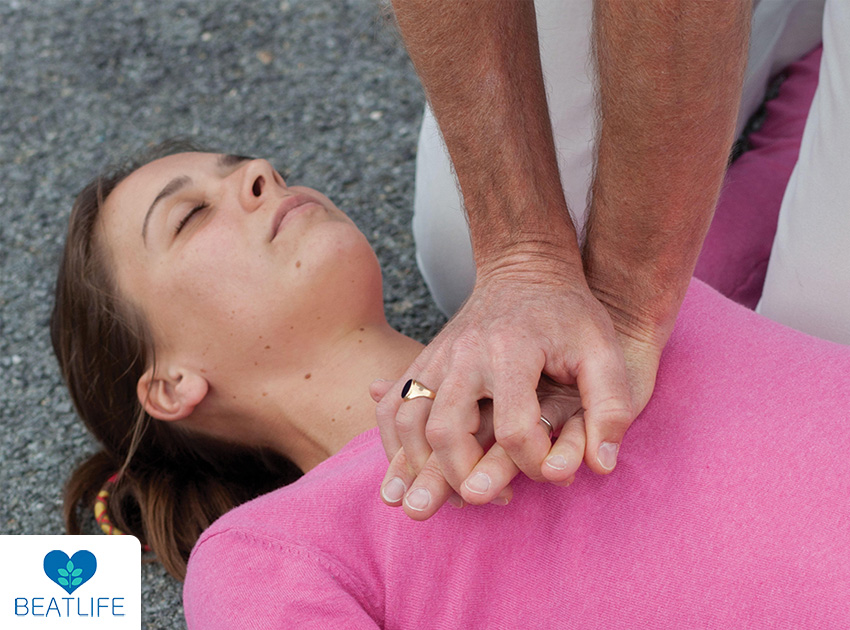Performing cardiopulmonary resuscitation (CPR) on a pregnant woman is a critical skill that can make a life-saving difference for both the mother and her unborn child. In this comprehensive guide, we’ll walk you through the steps of How to Give CPR to a pregnant woman, addressing unique considerations and emphasizing the importance of prompt and effective intervention.
Contents
Understanding the Importance of CPR
Cardiac arrest in a pregnant woman is a dire situation that necessitates immediate and effective intervention. The significance of CPR lies in its ability to maintain vital blood flow to both the mother and the developing fetus during a life-threatening emergency. Rapid initiation of CPR can be the decisive factor in ensuring the survival of both lives, emphasizing the critical importance of this life-saving skill.
To Give CPR to a pregnant woman requires a unique set of considerations and skills. While the fundamental principles of CPR remain unchanged, responders must be aware of the physiological changes that occur during pregnancy. This understanding enables them to adapt their approach, ensuring effective chest compressions and rescue breaths tailored to the specific needs of a pregnant woman. Recognizing the importance of CPR in this context emphasizes the responsibility to act swiftly and confidently during a cardiac emergency to maximize the chances of a positive outcome for both the mother and the unborn child.
Recognizing Signs of Cardiac Arrest
The ability to promptly recognize signs of cardiac arrest in a pregnant woman is paramount for initiating timely CPR. Observing for the absence of breathing, unresponsiveness, and the lack of a pulse serves as a rapid assessment to determine the need for intervention. Recognizing these signs requires a heightened awareness of the pregnant woman’s physical condition, emphasizing the need for quick and accurate evaluation.
Being vigilant about signs of cardiac arrest is not only a responsibility but a potentially life-saving skill. The sooner a responder identifies these indicators, s/he can Give CPR to a pregnant woman, increasing the likelihood of a positive outcome. Recognizing the signs of cardiac arrest in a pregnant woman is a critical step toward delivering effective CPR, underscoring the importance of staying attentive and responsive in emergencies.

Performing CPR: Step-by-Step Guide
To Give CPR to a pregnant woman involves a systematic and well-coordinated approach. The following step-by-step guide outlines the key actions to be taken:
a. Assess the Situation
Quickly evaluate the environment for any potential dangers and ensure your safety. Check for responsiveness by gently tapping the woman and shouting for a response.
b. Activate Emergency Services
If the woman is unresponsive and not breathing normally, immediately activate emergency medical services (EMS) or instruct someone nearby to do so.
c. Chest Compressions
Position the woman on a firm surface and locate the proper hand placement for chest compressions. Begin administering chest compressions at a rate of 100-120 compressions per minute, allowing for chest recoil between compressions. Using a BEATLIFE CPRmeter can help you to adjust the correct rhythm and compression.
d. Airway and Breathing
Tilt the woman’s head back slightly to open the airway and provide two rescue breaths. Ensure effective chest rise with each breath. If breaths do not go in, reposition the head and attempt again.
e. Continue CPR
Continue the cycle of chest compressions and rescue breaths until emergency medical help arrives. Regularly reassess the woman’s condition and make adjustments as needed.
4. Considerations for Pregnant Women
When you want to Give CPR to a pregnant woman, there are specific considerations to keep in mind:
a. Hand Placement
Adjust hand placement during chest compressions to avoid excessive pressure on the abdomen. The heel of the hand should be placed on the center of the chest.
b. Compression Depth
Maintain the standard compression depth of at least 2 inches, but be mindful of the potential presence of a fetus. Adapt compression depth to ensure effectiveness while minimizing the risk of harm.
c. Support for the Pelvic Area
Consider providing additional support to the woman’s pelvic area to minimize strain on the uterus and enhance the effectiveness of chest compressions.
By following these guidelines and considerations, responders can perform CPR effectively on pregnant women, optimizing the chances of a positive outcome for both mother and child.

Post-CPR Care and Follow-Up
After Giving CPR To a Pregnant Woman, it’s crucial to consider post-CPR care and follow-up measures. The following steps outline the necessary actions:
a. Monitor Vital Signs
Once the woman regains consciousness or emergency medical services arrive, monitor her vital signs closely. Check for signs of normal breathing and circulation.
b. Provide Emotional Support
Cardiac emergencies can be traumatic, and emotional support is vital. Offer reassurance and comfort to both the pregnant woman and any witnesses present during the incident.
c. Follow Medical Guidance
Upon the arrival of medical professionals, provide them with a detailed account of the CPR procedure. Follow their guidance and instructions for any additional assessments or interventions.

6. Training to Give CPR to a pregnant woman
Given the unique considerations when performing CPR on pregnant women, specialized training is highly recommended. Key elements of this training include:
a. Recognition of Pregnancy
Trainees should learn how to quickly identify signs of pregnancy and adjust their approach accordingly during emergencies.
b. Modified Techniques
Training programs should cover modified CPR techniques, including hand placement, compression depth, and support for the pelvic area.
c. Simulated Scenarios
Practical, hands-on training using simulated scenarios involving pregnant women helps build confidence and familiarity with the necessary adjustments.
FAQs
Q1: Is CPR safe for pregnant women?
Yes, CPR is safe and crucial during cardiac emergencies in pregnant women. Adjustments in hand placement and compression depth should be made to accommodate the pregnancy.
Q2: How does pregnancy affect the CPR technique?
Physiological changes in pregnancy may require modifications in hand placement and compression depth to ensure the safety of both the mother and the unborn child.
Q3: Can someone with basic CPR training perform it on a pregnant woman?
Yes, individuals with basic CPR training can perform it on a pregnant woman. However, awareness of the specific considerations for pregnant women is essential.
Q4: What if the woman is in a late stage of pregnancy?
Even in the late stages of pregnancy, CPR remains a critical intervention. Adjustments in hand placement and support for the pelvic area should be implemented.
Q5: Are there any risks to the unborn child during CPR?
While CPR is generally safe, there may be minimal risks to the unborn child. However, the potential benefits of saving the mother’s life far outweigh these risks.
Conclusion
To give CPR to a pregnant woman demands a blend of urgency, precision, and sensitivity to the unique physiological changes occurring during pregnancy. With proper training and awareness of the specific considerations, responders can significantly contribute to positive outcomes in emergencies involving pregnant individuals.
In summary, the importance of adjusting CPR techniques, providing post-CPR care, and seeking specialized training cannot be overstated. By integrating these elements, individuals can play a vital role in preserving the health and well-being of both the pregnant woman and her unborn child during critical moments.
Reviewed by Dr Jamshidi Mohammad Reza

